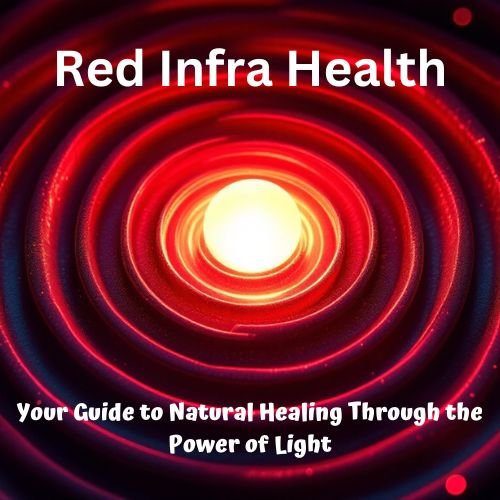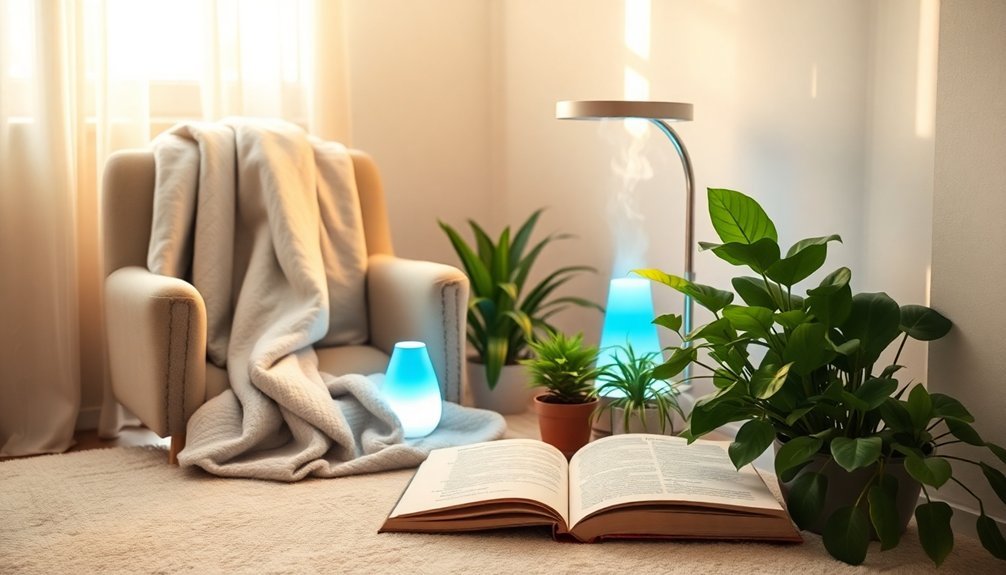Athletes choose 660nm and 850nm wavelengths because they work together to enhance both performance and recovery. You'll get immediate surface-level benefits from 660nm, which boosts ATP production and reduces inflammation in your muscles. The 850nm wavelength penetrates deeper into your tissues, improving blood flow and oxygen delivery while stimulating collagen production. When combined, these wavelengths create a powerful synergistic effect that reduces muscle fatigue, speeds up recovery, and improves overall athletic performance. Understanding the science behind these specific wavelengths can help you maximize your training results.
The Science Behind Wavelength Selection

When we explore the science of wavelength selection in red light therapy, two specific wavelengths stand out: 660nm and 850nm. These wavelengths aren't chosen randomly; they're specifically targeted to activate Cytochrome C Oxidase (CCO), the key enzyme that drives cellular energy production and healing processes.
You'll find that 660nm wavelengths work effectively in the skin's outer layers, where they boost ATP production and stimulate various biological processes. This wavelength excels at reducing inflammation and promoting healing in deeper skin layers, making it invaluable for athletes dealing with surface-level injuries and muscle recovery. Athletes particularly value its ability to aid muscle repair during intensive training periods.
The 850nm wavelength, on the other hand, penetrates much deeper into your tissues. It's particularly effective at enhancing blood flow, delivering essential nutrients and oxygen to muscles, and supporting collagen production. For athletes, this means faster recovery from intense training sessions and reduced muscle soreness.
While other wavelengths like 808nm and 830nm show promise, 850nm offers comparable benefits while being more cost-effective in LED-based therapy devices. The specificity of these wavelengths guarantees predictable, research-backed results, which is vital for athletes following structured training programs.
Athletic Recovery and Performance Benefits
Red light therapy consistently delivers powerful benefits for both athletic recovery and performance enhancement. When you use 660nm and 850nm wavelengths, you'll experience significant improvements in muscle function and recovery time.
The 660nm wavelength excels at reducing muscle fatigue and inflammation while boosting your ATP production. You'll notice increased endurance, enhanced muscle strength, and reduced soreness after intense workouts. Athletes using this wavelength benefit from improved protein synthesis during recovery periods.
This wavelength also supports faster wound healing and helps alleviate neuropathic pain.
Meanwhile, the 850nm wavelength penetrates deeper into your tissues, offering complementary benefits. It's particularly effective at improving your VO2 max and extending time until exhaustion.
You'll see better sprint performance and reduced muscle damage markers like creatine kinase and lactate dehydrogenase. This wavelength also enhances your circulation, delivering more oxygen and nutrients to working muscles.
When combined, these wavelengths create an all-encompassing approach to athletic enhancement. You'll recover faster from training sessions, experience less inflammation, and maintain better overall muscle health.
The dual-wavelength strategy helps you achieve peak performance while minimizing recovery time, making it an invaluable tool for serious athletes.
Muscle and Joint Applications

Anyone seeking to enhance muscle and joint health will find significant value in dual-wavelength therapy. The combination of 660nm and 850nm wavelengths works synergistically to enhance muscle regeneration, reduce fatigue, and promote faster recovery after intense training sessions.
You'll experience improved muscle oxygenation and increased blood flow, which are essential for maintaining peak performance. Your cells will produce increased ATP levels during and after treatment sessions.
For your joints, these wavelengths offer powerful anti-inflammatory benefits. You'll notice reduced pain and swelling, particularly beneficial if you're dealing with exercise-related joint stress. The 850nm wavelength specifically supports collagen production, which strengthens connective tissues, while the 660nm wavelength decreases inflammatory cells that can impede recovery.
When you're consistent with treatment, you'll benefit from enhanced tissue regeneration and improved joint mobility. The wavelengths stimulate new blood vessel formation and collagen deposition, accelerating your body's natural healing processes.
Whether you're targeting specific muscle groups or addressing joint concerns, these wavelengths provide thorough support for both acute and chronic conditions. You'll find the therapy especially effective for knee, back, and shoulder applications, where maintaining top-notch tissue health is vital for athletic performance.
Combining Wavelengths for Maximum Results
Understanding the synergistic power of combined wavelengths transforms your therapeutic outcomes. When you pair 660nm and 850nm wavelengths, you'll tap into enhanced benefits that surpass using either wavelength alone.
This combination works through different mechanisms – 660nm targets surface tissues while 850nm penetrates deeper, creating a thorough therapeutic effect.
You'll experience amplified results because these wavelengths work synergistically, not just additively. They interact with multiple sites in your mitochondrial chain simultaneously, boosting cellular energy production more effectively than single wavelengths. For athletes, this means better muscle recovery and enhanced performance potential.
To maximize your results, you'll need to think about proper dosing and application methods. While high-powered devices can deliver stronger therapeutic effects, you must avoid over-irradiation due to the biphasic dose response.
When you're selecting a device, look for one that offers both wavelengths with adjustable power settings. The RedRush 840 PULSE MAX exemplifies this dual-wavelength approach, providing variable irradiance levels to suit different therapeutic needs.
Research-Backed Training Protocols

While diving into evidence-based practices, you'll find that research supports specific photobiomodulation (PBM) protocols for athletic training.
Studies show that successful protocols typically involve 10-20 minute sessions, with energy doses ranging from 30J to 600J per application. You'll want to target specific muscle groups, particularly focusing on areas you're training, such as quadriceps or biceps.
Timing your PBM sessions is vital. You can apply it pre-exercise, post-exercise, or during rest intervals, though results vary based on your goals. For muscle damage reduction and recovery enhancement, post-exercise applications have shown promising results. If you're aiming to prevent injury, consider using PBM during exercise intervals.
The most effective protocols utilize either 660nm or 850nm wavelengths, with energy densities between 1 J/cm² and 4.5 J/cm². You'll see better results with consistent application – studies indicate that 5-16 sessions can produce substantial benefits.
While PBM won't drastically improve your high-intensity performance, it can enhance your endurance and aid in muscle recovery by reducing damage markers like creatine kinase. Remember that device specifications, including power output and beam profile, markedly impact your results.
Frequently Asked Questions
Can Light Therapy Devices Be Used During Competition or Only During Training?
You'll want to use red light therapy during training rather than competition due to ethical concerns and fairness debates. While it's not banned in most sports, it's best utilized for pre-competition preparation and recovery.
How Long Does a Single Light Therapy Session Typically Last for Athletes?
You'll typically spend 15-30 minutes in a light therapy session as an athlete. If you're using a handheld device for targeted areas, you'll need 5-10 minutes, while full-body panels require longer sessions.
Are There Any Side Effects When Using These Wavelengths Daily?
You'll rarely experience side effects with daily use of these wavelengths when following proper guidelines. However, you might notice mild skin irritation or eye sensitivity if you don't use protective gear or overexpose yourself.
Do Weather Conditions Affect the Effectiveness of Light Therapy for Outdoor Athletes?
While you're training outdoors, weather conditions can affect light therapy's effectiveness. Temperature extremes, humidity, and UV exposure may impact your results, though there's limited research directly linking weather to therapy outcomes.
Should Athletes Adjust Wavelength Exposure Based on Their Specific Sport Type?
Yes, you should adjust wavelength exposure based on your sport. Use 850nm for endurance activities needing deep tissue recovery, and 660nm for high-intensity sports requiring quick muscle repair and energy restoration.
In Summary
You've learned why 660nm and 850nm wavelengths are the go-to choices for athletes worldwide. These specific wavelengths penetrate tissues effectively, boost cellular energy, and promote faster recovery. By combining red (660nm) and near-infrared (850nm) light, you'll target both surface and deep tissues. When you follow research-backed protocols and proper timing, you're giving yourself a proven edge in athletic performance and recovery.





Leave a Reply